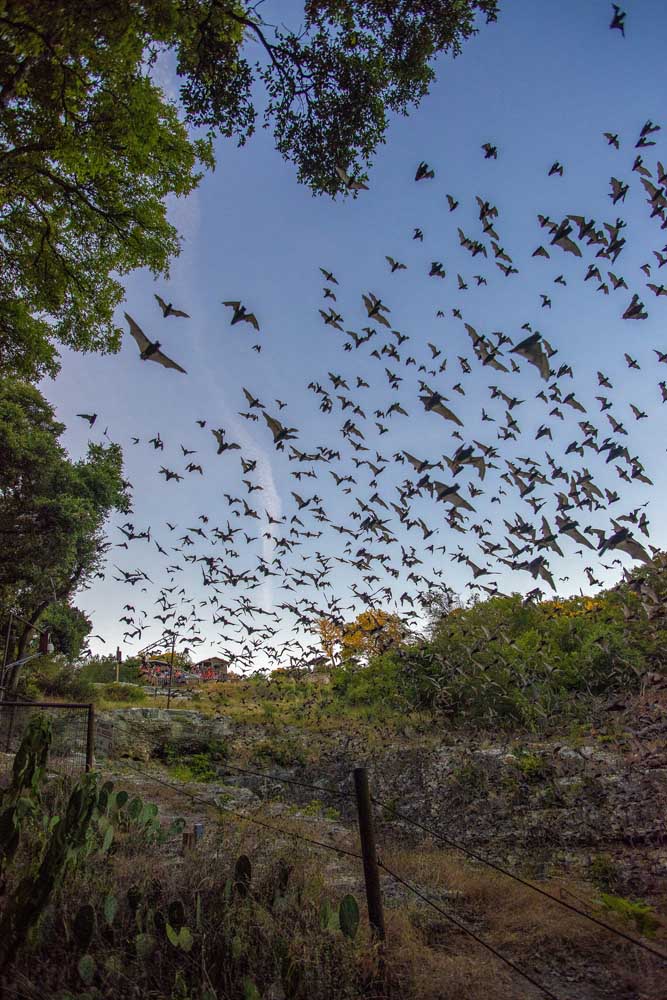Bats Are Important But Some In Texas Face Uncertain Future
Published 5:00 pm Saturday, May 23, 2020

- There are 31 species of bats in Texas and they all have a beneficial purpose. The best known populations are large colonies found in the Hill Country, but they can be found throughout the state.
I was in the front yard at first light when I caught a glimpse of something fluttering around above me. It took a minute to comprehend what it was.
Bats. Probably Mexican free-tailed bats, but 31 of the 47 species of bats found in the U.S. can be found in Texas, and many of them are in East Texas.
I have to admit, my first reaction was fear. We are so programmed by movies and reports of rabid bats that it is hard not to have a phobia.
The truth is bats have a purpose and they are very good at what they do. Best known is that some species consume massive amounts of insects each night, helping reduce the amount of pesticides required for agricultural and residential use. Lesser known is that some also eat seeds and help regenerate forests. They may even be partially responsible for the margarita you had with supper.
“Bats are a major pollinator of agave. We like to say that without bats, we would not have tequila. They even have some bat-friendly brands of tequila,” said Nathan Fuller, Texas Parks and Wildlife Department’s bat specialist.
There are a number of misconceptions about bats, including their familial relations. For example, many believe bats are more related to rats and mice than they are us.
“If you look at the mammalian tree, rodents and bats are the most distantly related. Bats are at the end of the tree that includes dogs, primates, humans, deer and whales,” Fuller said.
Worldwide, there are about 1,350 species of bats, making them the second most diverse group of mammals behind rodents. To biologists, they are an indicator species.
“If we see a decline, that is an indicator of things in our world. They are like the canary in the mine,” Fuller said.
And they are long-lived. Depending on the species, they can live for more than 15 years, with the longest living being one of the smallest. The brown bat, only about the size of a thumb, has been known to live upwards of 30 years.
Along with the beneficial aspects of bats, Fuller notes there is also an intrinsic value to them just as there is for cardinals, blue jays or robins.
“They are fascinating. They have been around for millions of years. They evolved because there was a void in nighttime hunting in the sky,” Fuller said.
No one knows exactly how many bats call Texas home, but they can be found statewide with the largest populations in the Big Bend region with all of its caves and crags, and the smallest in the Panhandle where there is limited habitat.
They are best known where they can be found in huge colonies like Bracken Cave in San Antonio that is home to an estimated 15 million bats, the Frio Bat Cave in Concan with 10 million, Old Tunnel State Park near Fredericksburg with 2-3 million and the Congress Avenue bridge in Austin with a million. That does not mean they are not just as numerous in East Texas where they live in tree cavities, barns, chimneys and anywhere else that fits their needs.
“What you are seeing (in the big colonies) is Mexican free-tailed bats. They form big colonies, but they can be found from North Carolina in the east to California in the west. In Central Texas, they have no trees to roost so they use caves. In East Texas, you have great (bat) species diversity. I can’t give you the number as to how many species, but they are numerous, but just spread out,” Fuller said.
But all is not right in the bat world. A disease, white-nose syndrome, is currently spreading through the North American population and there is concern it could lead to the demise of large numbers of bats if not entire species.
WNS was first discovered in the U.S. in a New York cave population in 2006. It is believed to have been transmitted either accidentally from the clothing of a visitor to the cave or possibly a wayward bat that found its way to the U.S. in a shipping container.
It was hoped the disease could be naturally contained by warm weather, but that has changed with its discovery in Texas.
“We found the pathogen that causes the disease in 2017 and we found the disease this year,” Fuller said.
Right now it is believed the disease only impacts hibernating bats and not migrating species.
“It has led to a massive dieoff in cave bats in Texas. That is one of nine or 10 species that have been hit,” Fuller said.
Unfortunately, there appears to be nothing that can be done to solve the problem. Research is being conducted on cleaning man-made roosts at times when the bats are not hibernating in them, but even if that proves successful it is not something that can be carried over to caves and tunnels because of other resident species that live there. Fuller said, at best, the man-made structures might provide a refuge from the caves and tunnels for healthy bats along with providing time for researchers.
“One other thing biologists are trying to do is to get the public to support the Recovering America’s Wildlife Act. It would provide huge amounts of funding for a lot of things that are non-game,” Fuller said.
Oh, and if you have a bat phobia, Fuller said with warming world-wide temperatures that vampire bats are moving closer to the U.S. from Mexico. Just don’t believe everything you see in movies.






